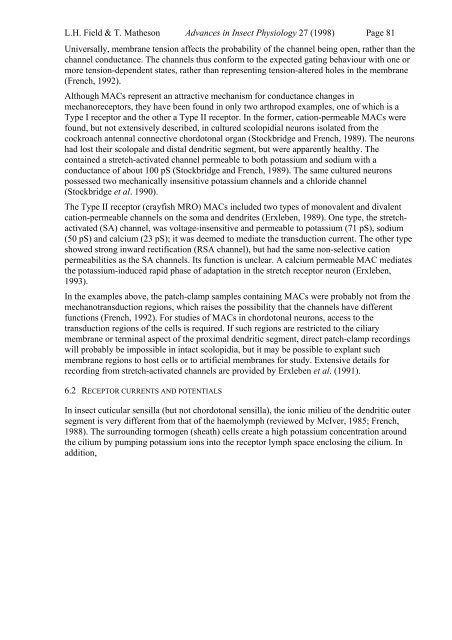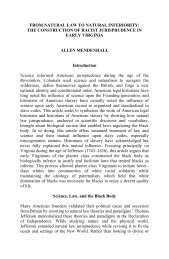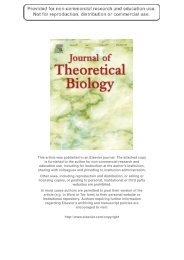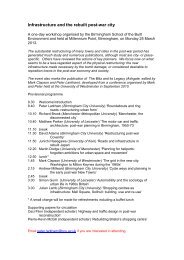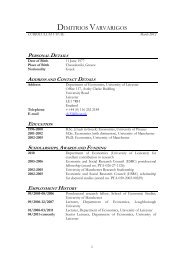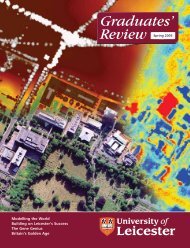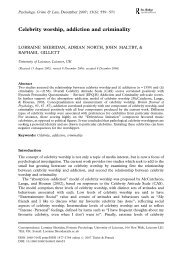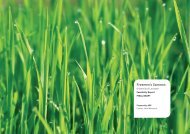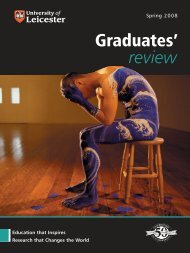Chordotonal Organs of Insects
Chordotonal Organs of Insects
Chordotonal Organs of Insects
You also want an ePaper? Increase the reach of your titles
YUMPU automatically turns print PDFs into web optimized ePapers that Google loves.
L.H. Field & T. Matheson Advances in Insect Physiology 27 (1998) Page 81Universally, membrane tension affects the probability <strong>of</strong> the channel being open, rather than thechannel conductance. The channels thus conform to the expected gating behaviour with one ormore tension-dependent states, rather than representing tension-altered holes in the membrane(French, 1992).Although MACs represent an attractive mechanism for conductance changes inmechanoreceptors, they have been found in only two arthropod examples, one <strong>of</strong> which is aType I receptor and the other a Type II receptor. In the former, cation-permeable MACs werefound, but not extensively described, in cultured scolopidial neurons isolated from thecockroach antennal connective chordotonal organ (Stockbridge and French, 1989). The neuronshad lost their scolopale and distal dendritic segment, but were apparently healthy. Thecontained a stretch-activated channel permeable to both potassium and sodium with aconductance <strong>of</strong> about 100 pS (Stockbridge and French, 1989). The same cultured neuronspossessed two mechanically insensitive potassium channels and a chloride channel(Stockbridge et al. 1990).The Type II receptor (crayfish MRO) MACs included two types <strong>of</strong> monovalent and divalentcation-permeable channels on the soma and dendrites (Erxleben, 1989). One type, the stretchactivated(SA) channel, was voltage-insensitive and permeable to potassium (71 pS), sodium(50 pS) and calcium (23 pS); it was deemed to mediate the transduction current. The other typeshowed strong inward rectification (RSA channel), but had the same non-selective cationpermeabilities as the SA channels. Its function is unclear. A calcium permeable MAC mediatesthe potassium-induced rapid phase <strong>of</strong> adaptation in the stretch receptor neuron (Erxleben,1993).In the examples above, the patch-clamp samples containing MACs were probably not from themechanotransduction regions, which raises the possibility that the channels have differentfunctions (French, 1992). For studies <strong>of</strong> MACs in chordotonal neurons, access to thetransduction regions <strong>of</strong> the cells is required. If such regions are restricted to the ciliarymembrane or terminal aspect <strong>of</strong> the proximal dendritic segment, direct patch-clamp recordingswill probably be impossible in intact scolopidia, but it may be possible to explant suchmembrane regions to host cells or to artificial membranes for study. Extensive details forrecording from stretch-activated channels are provided by Erxleben et al. (1991).6.2 RECEPTOR CURRENTS AND POTENTIALSIn insect cuticular sensilla (but not chordotonal sensilla), the ionic milieu <strong>of</strong> the dendritic outersegment is very different from that <strong>of</strong> the haemolymph (reviewed by McIver, 1985; French,1988). The surrounding tormogen (sheath) cells create a high potassium concentration aroundthe cilium by pumping potassium ions into the receptor lymph space enclosing the cilium. Inaddition,


